Written by Millie Mannering
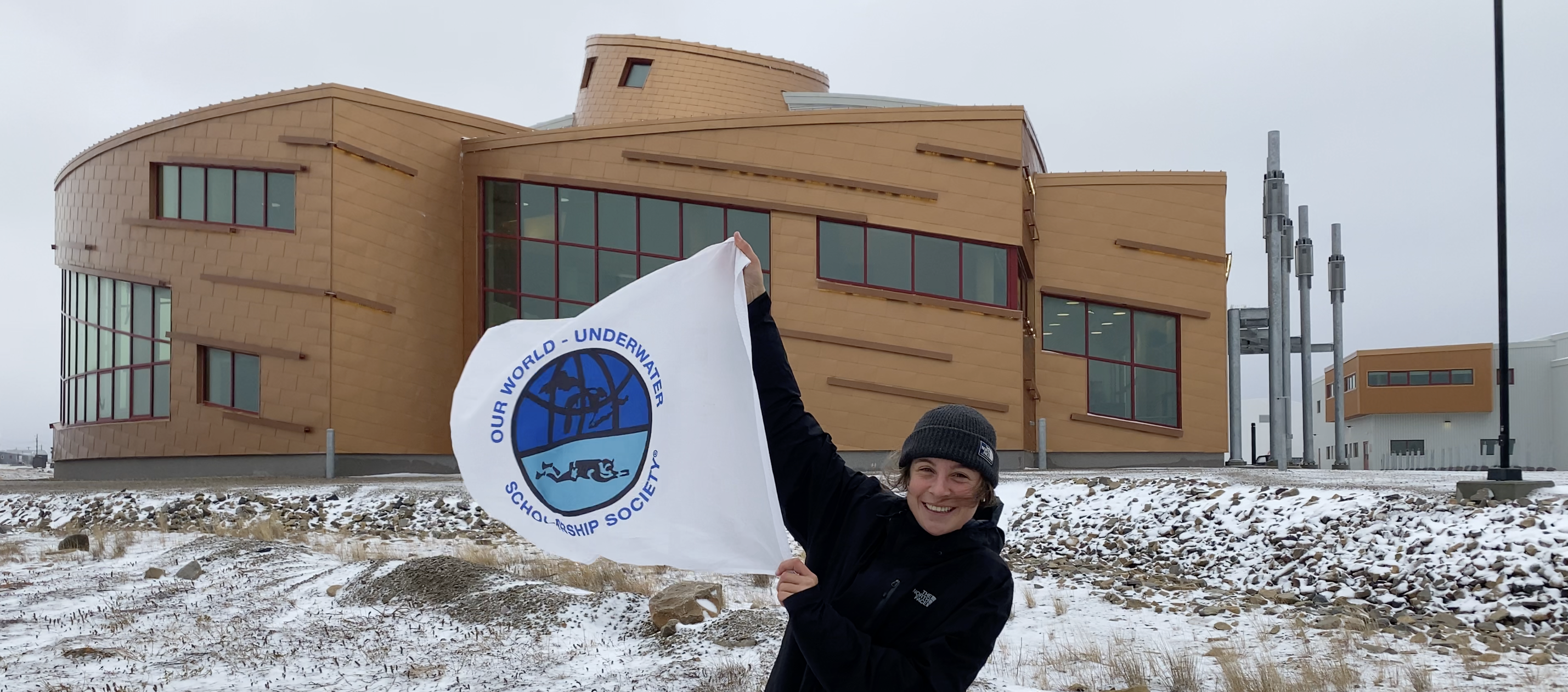
Flying the OWUSS flag outside the Canadian Hight Arctic Research Station in Ikaluktutiak, Cambridge Bay. Photo: Erik Kristina Nakahok Pedersen
Having always been fascinated by the polar regions, I was thrilled to have the opportunity to travel to the Canadian High Arctic Research Station (CHARS) in Ikaluktutiak, Nunavut. It took days to travel to the incredibly remote research station and my anticipation built as I flew through Aurora-filled skies and over the expansive tundra of Canada’s Northwest Territories. Operated by Polar Knowledge Canada, CHARS is an extraordinarily innovative facility which supports a diverse range of research projects to advance knowledge of the Arctic.
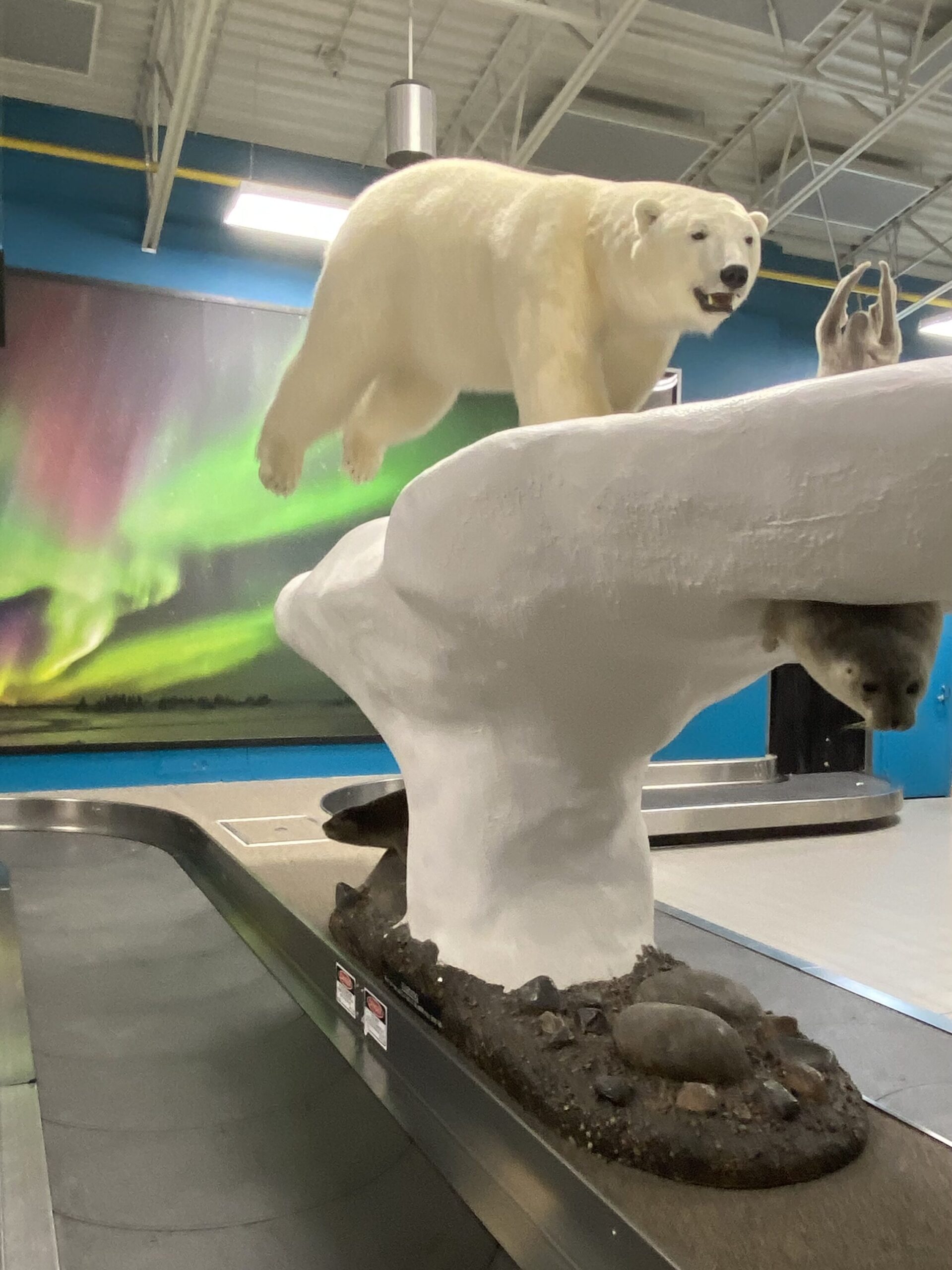
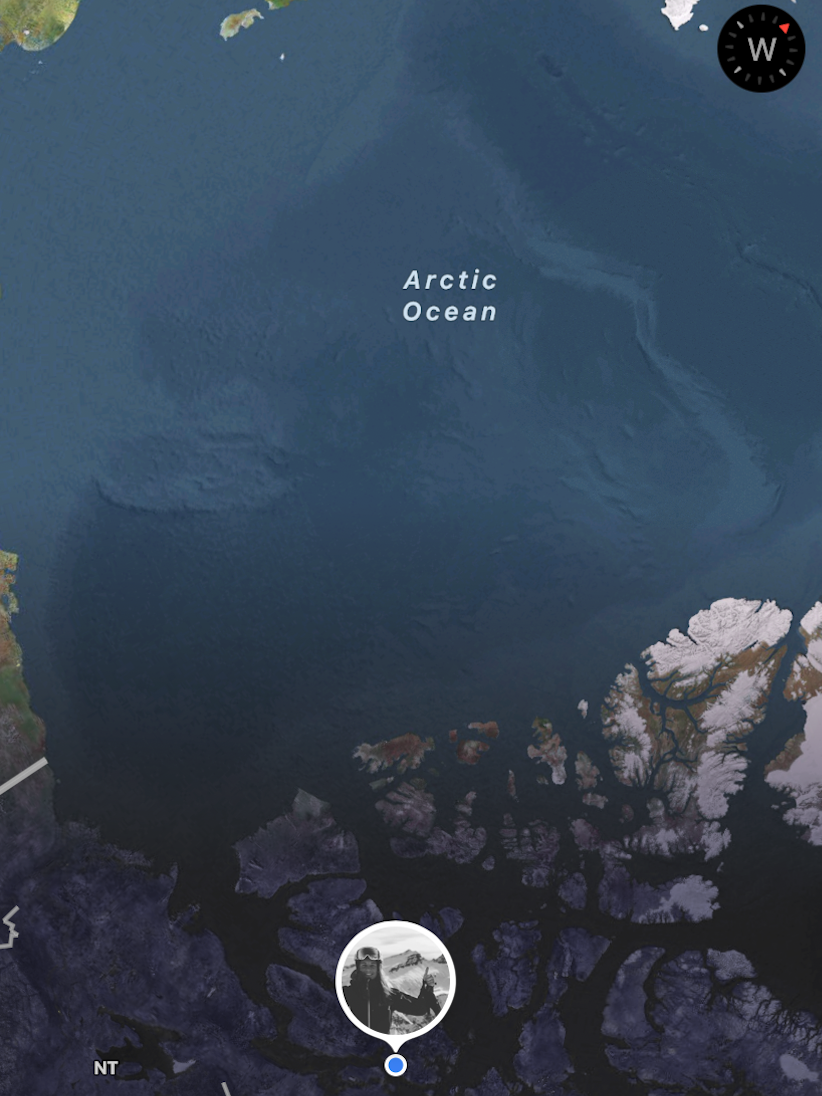

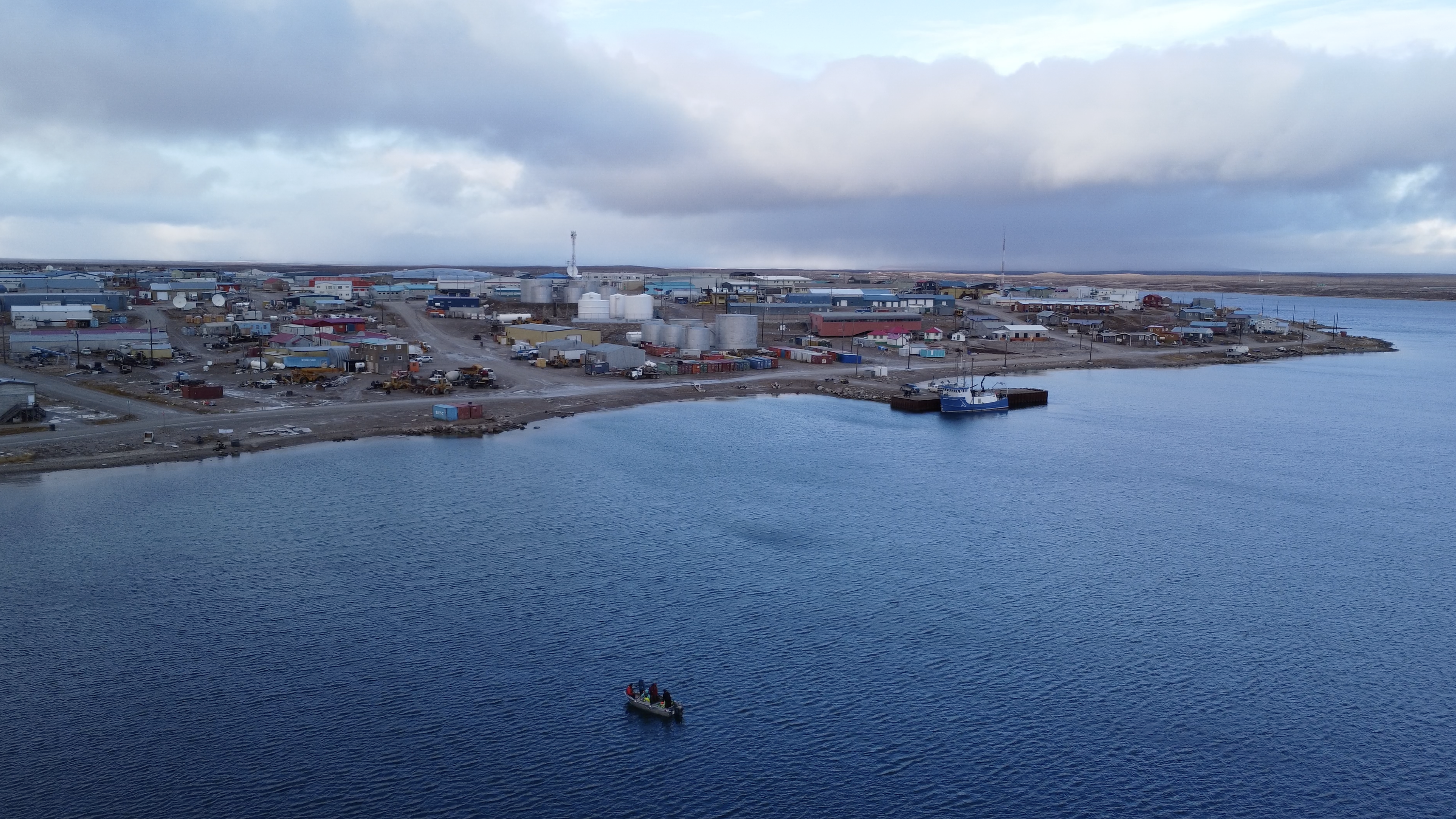
Left to Right: The coolest airport carousel in Yellowknife, the capital city of Canada’s Northwest Territories. My location on Victoria Island in the Kitikmeot region of the remote Canadian Arctic archipelago. My first dive in the Arctic! The remote hamlet of Ikaluktutiak/Cambridge Bay in the Canadian High Arctic. Photos: Millie Mannering
At CHARS, I enjoyed learning about the facilities, ongoing research projects and connecting with visiting scientists at the station. Amanda Savoie from the Canadian Museum of Nature, was investigating marine macroalgae biodiversity in the area. We discussed unique polar seaweed communities and I helped her team sort, label and preserve samples in the laboratory. I also learnt more about the newly established diving operations at CHARS and had the opportunity to join the scientific dive team to explore the Arctic waters!

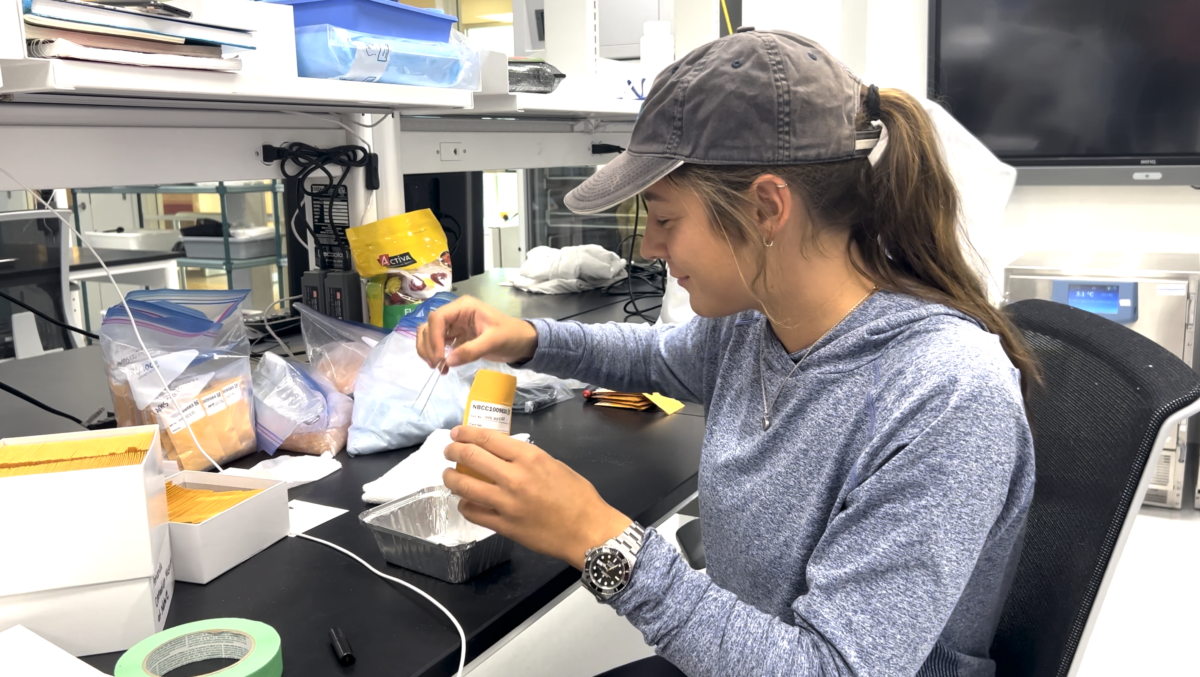
A new fleet of hovercrafts were delivered to CHARS which will allow access to research sites across the undulating tundra biome. Labelling and preserving seaweed samples with the Canadian Museum of Nature. Photos: Millie Mannering & Pierre Poirier
During my time in Nunavut, I was welcomed as a member of the Ocean Networks Canada team to help maintain, service and redeploy their Cambridge Bay Observatory. This community-led cabled ocean observatory consists of a series of instruments on shallow underwater cabled platform and a nearby onshore meteorological station.
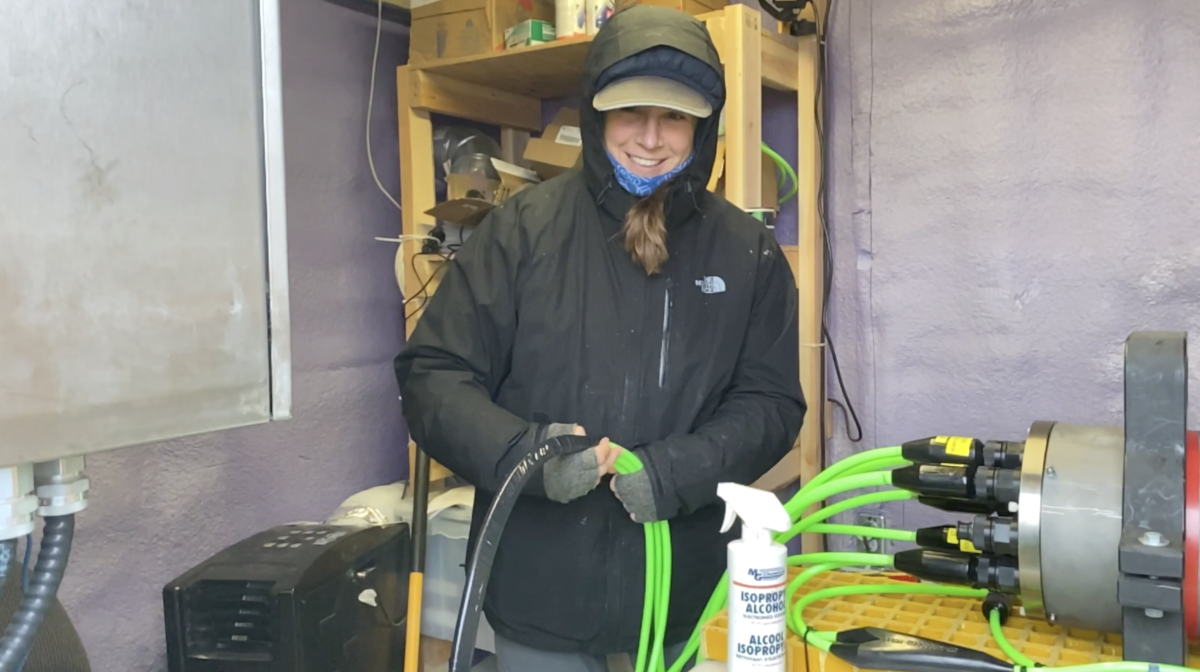
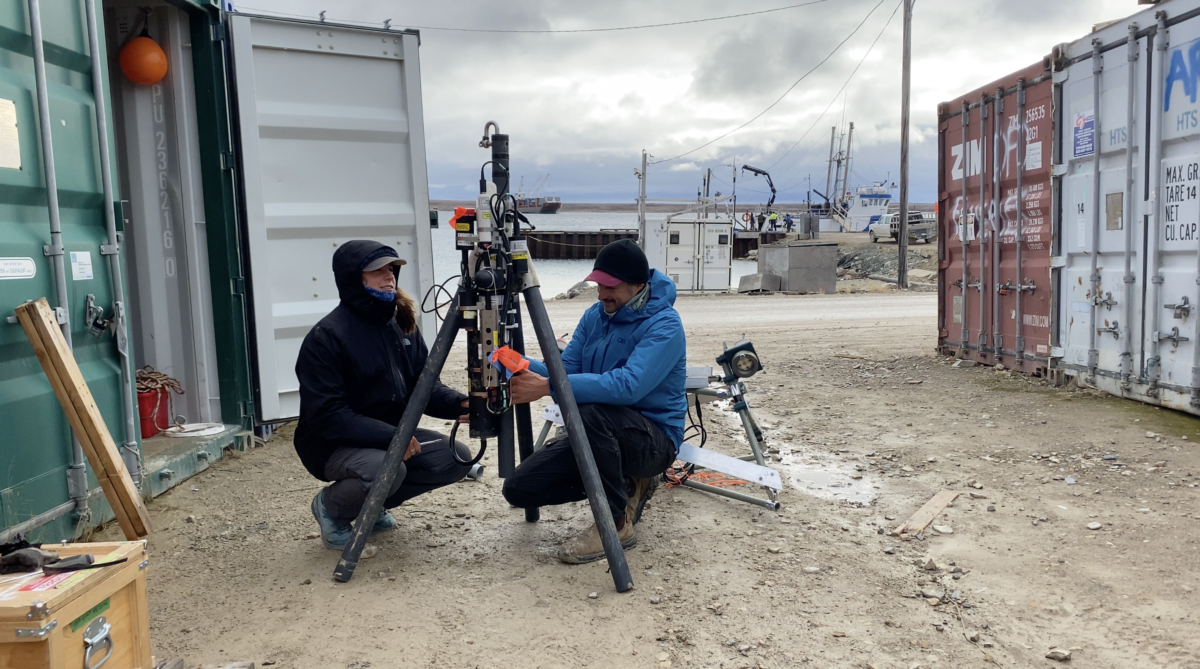
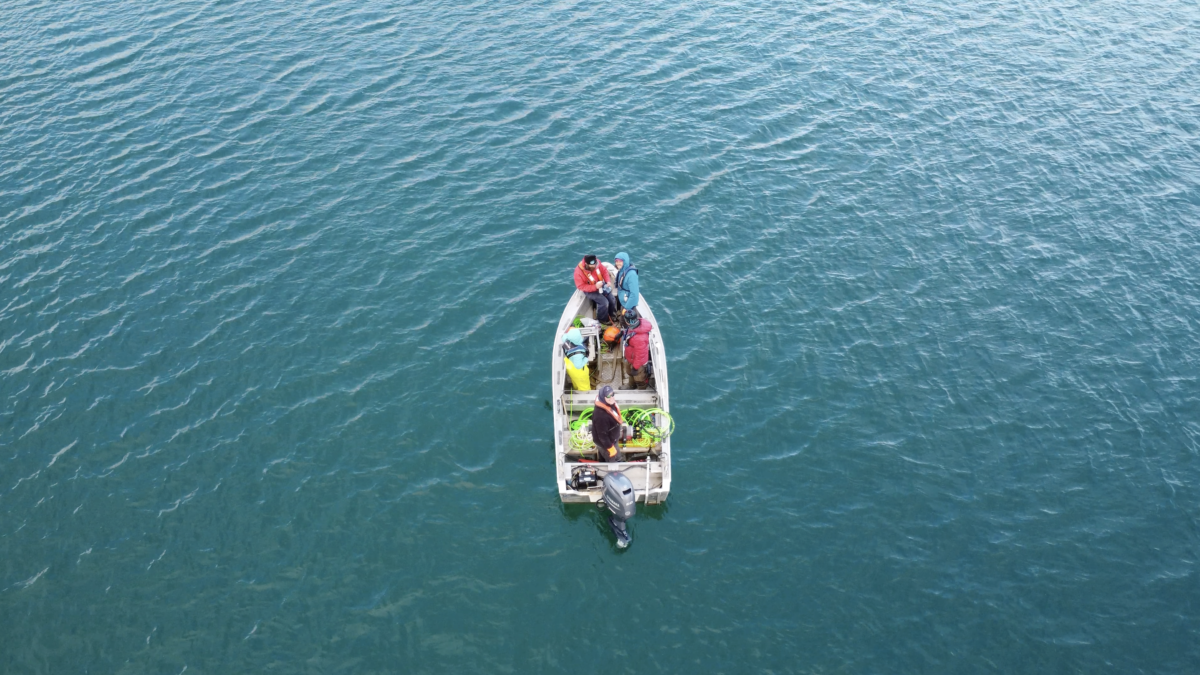
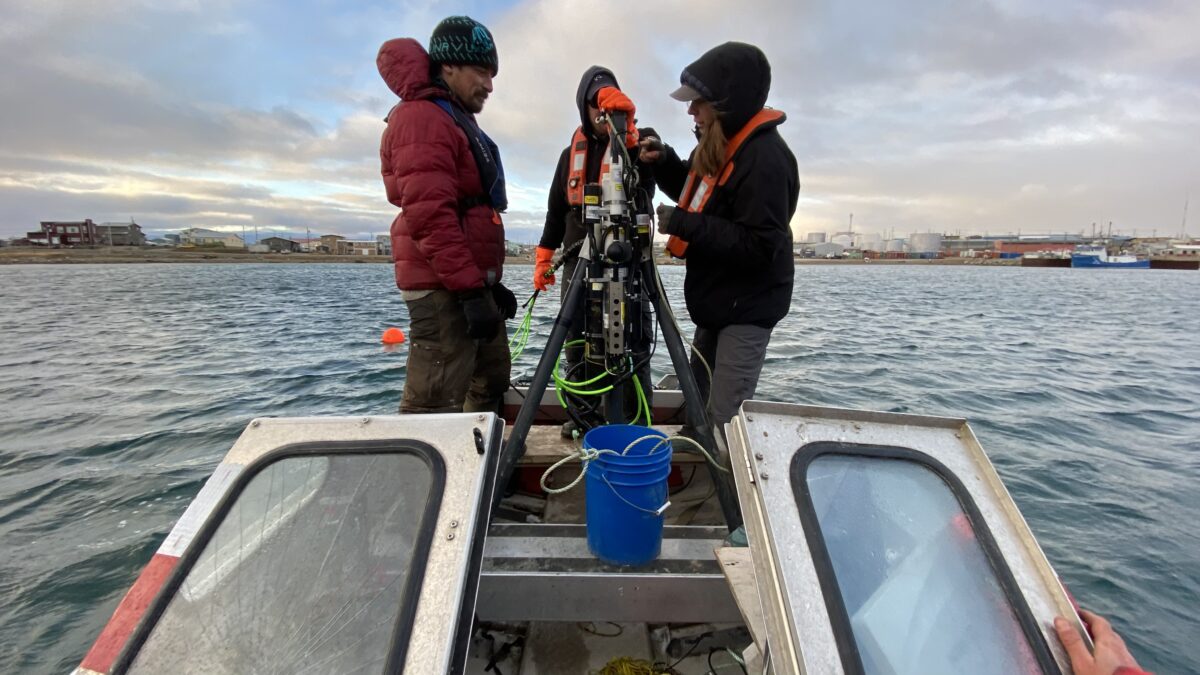
Servicing the platform, reinstalling instruments and redeploying the observatory in Cambridge Bay. Photos: Millie Mannering & Cassandra Bosma
The Cambridge Bay Observatory allows the community to gather scientific data and combine this with traditional knowledge to understand more about their dramatically changing environment. Ocean Networks Canada is unique in that all the data generated by these observatories is accessible and available to anyone who is interested.
Warming in the Arctic is occurring three to four times faster than the global average and climate change is having significant impacts on ecological processes and indigenous culture. For more information on the value of Arctic research and community partnerships, check out my feature in the Ocean Networks Canada interview series released as part of the 10-year observatory anniversary.
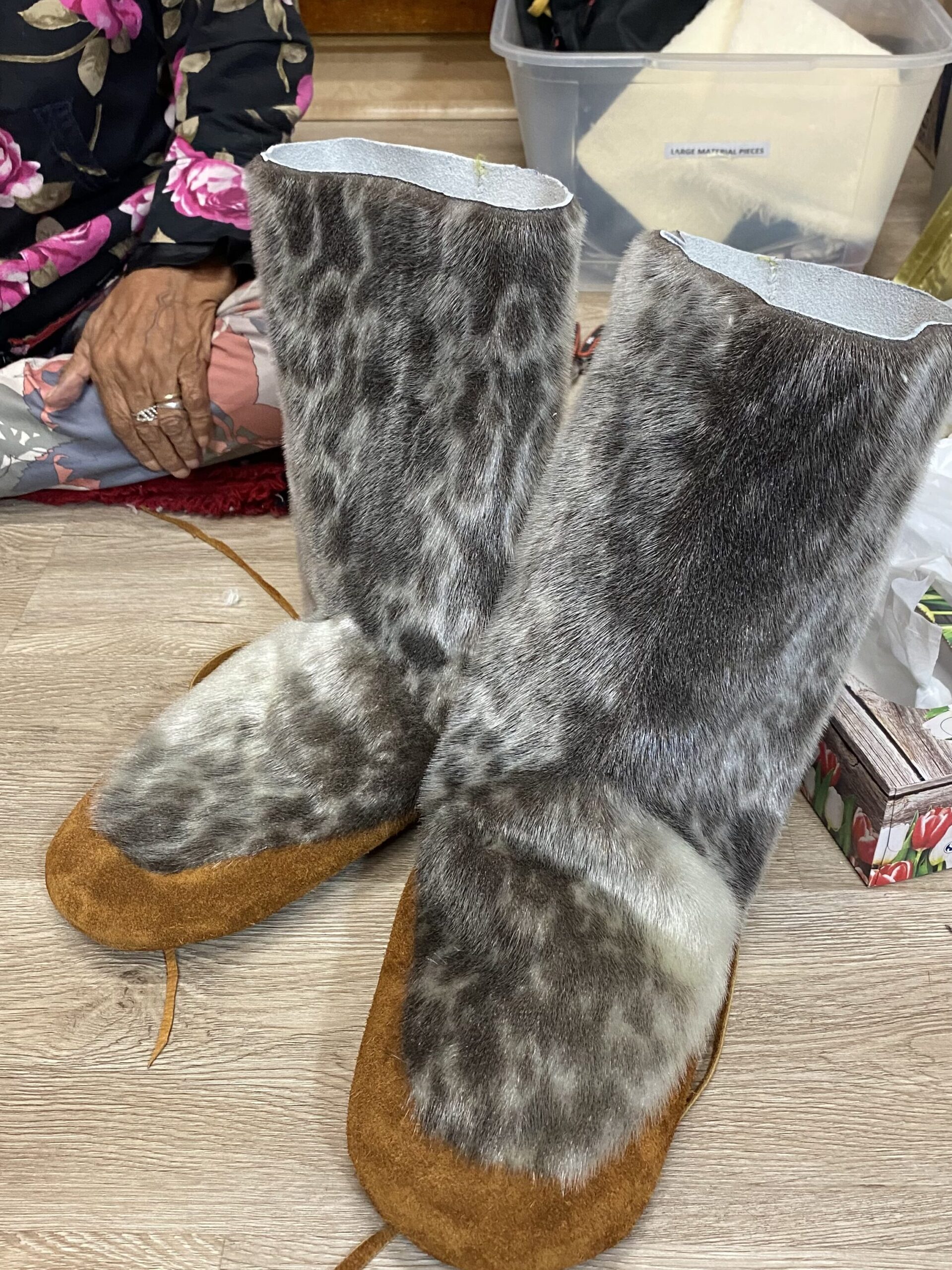
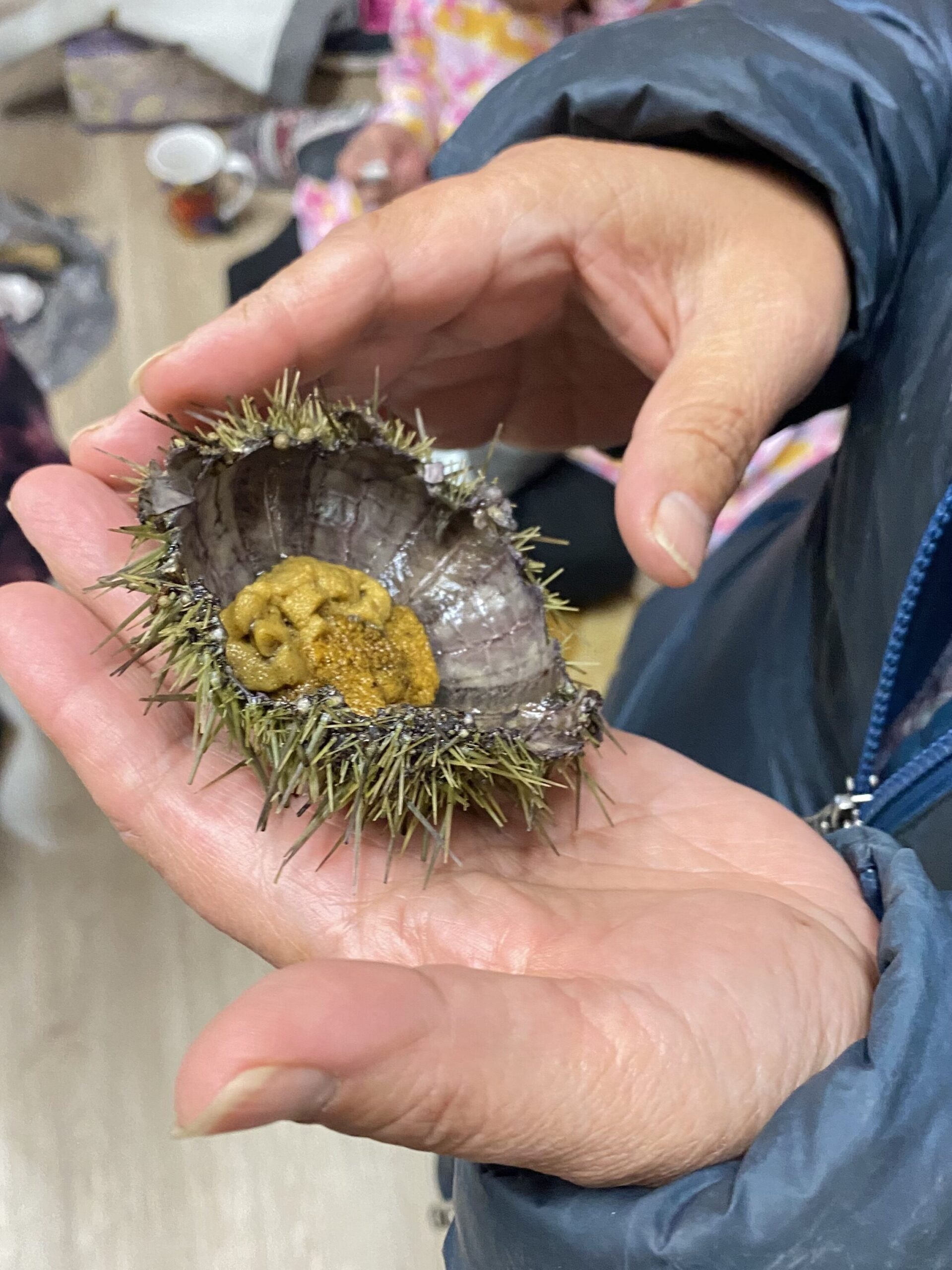
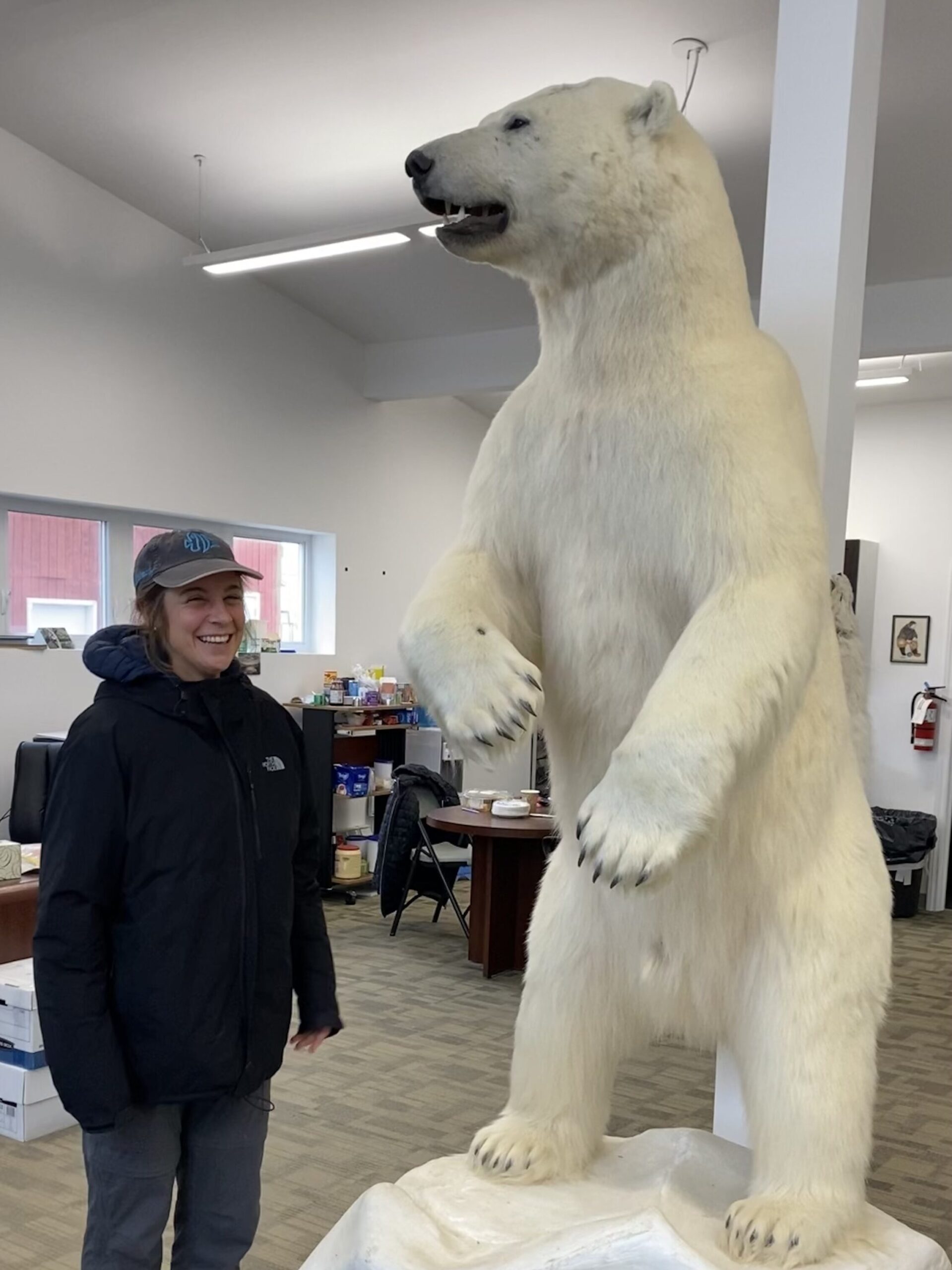
Seal skin boots made by Elders in the community. Sharing urchin roe with the Elders. Visiting the Ekaluktutiak Hunters and Trapping Organisation. Photo: Millie Mannering & Kiyomi Holman
The highlight of my time in Ikaluktutiak was connecting with the community and learning about fascinating indigenous traditions, culture and ways of life. It was very special to share urchin roe, from animals we collected diving, with Elders in the community. The seafood was a welcomed interlude to their work, as they met daily to sew. I was in awe watching Elders create beautiful garments, mittens and jewellery out of animal products such as beaver fur and seal skin. I was grateful to connect with community members who shared their traditional knowledge with me and took me across the vast Arctic tundra. I learnt about their connection to the land through traditional foods like Mikpu (dried meat typically caribou), Muktaaq (whale skin and blubber) and Char (an Arctic fish).
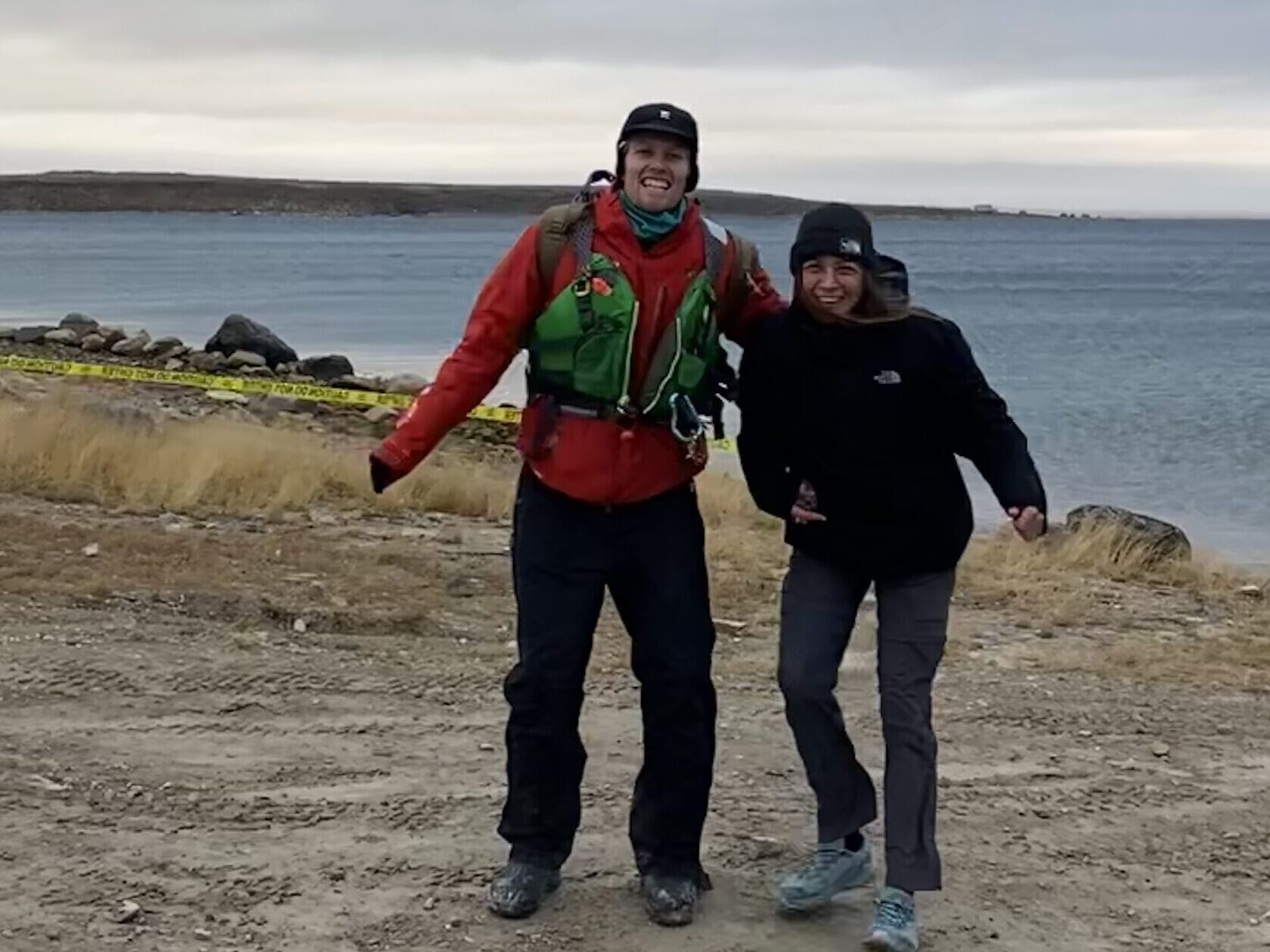

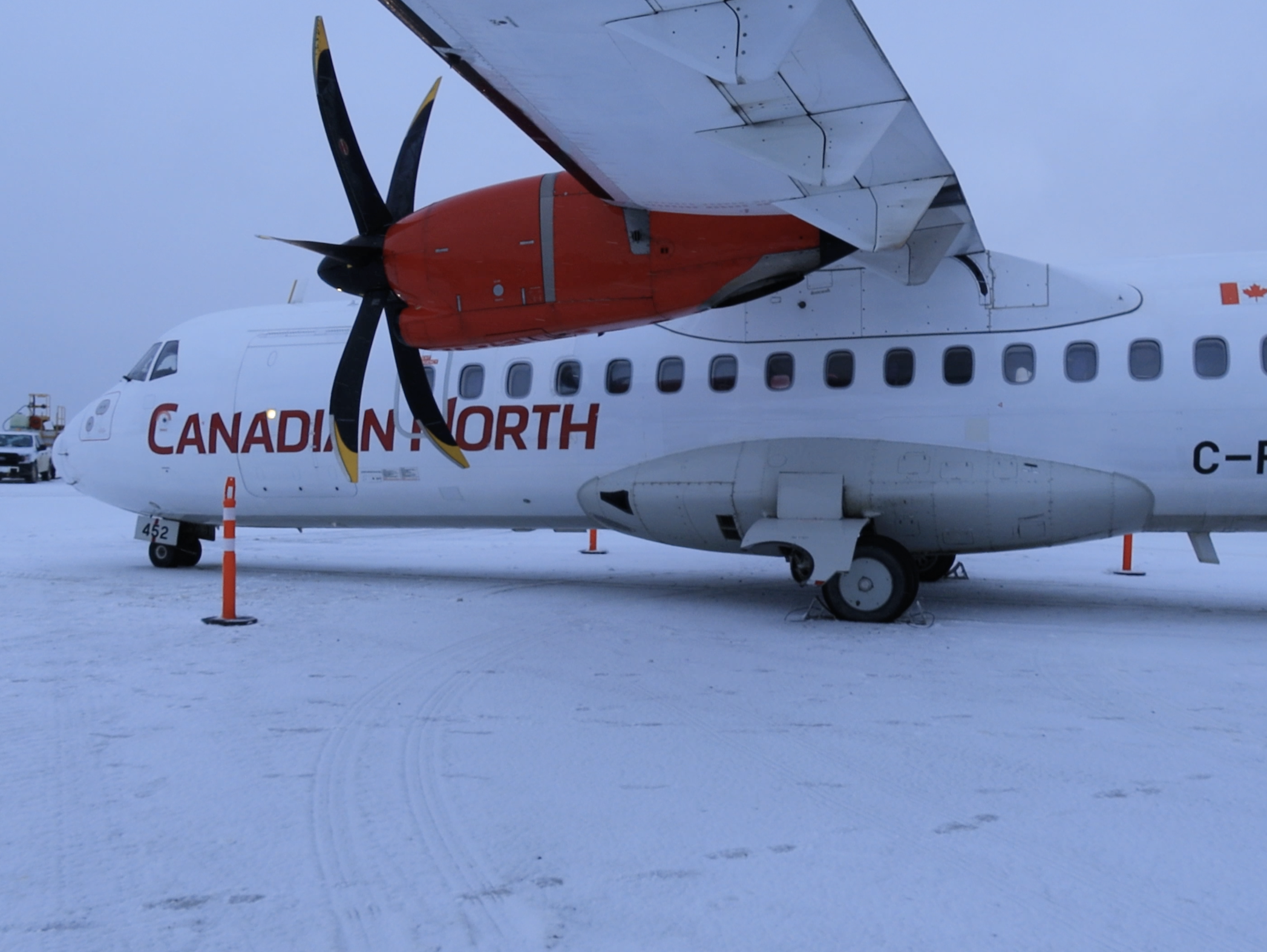
A special visit from Blake Hornblow – 14411km from home!! Exploring the coast with friends from the community. Leaving Cambridge Bay as winter arrives. Photo: Millie Mannering
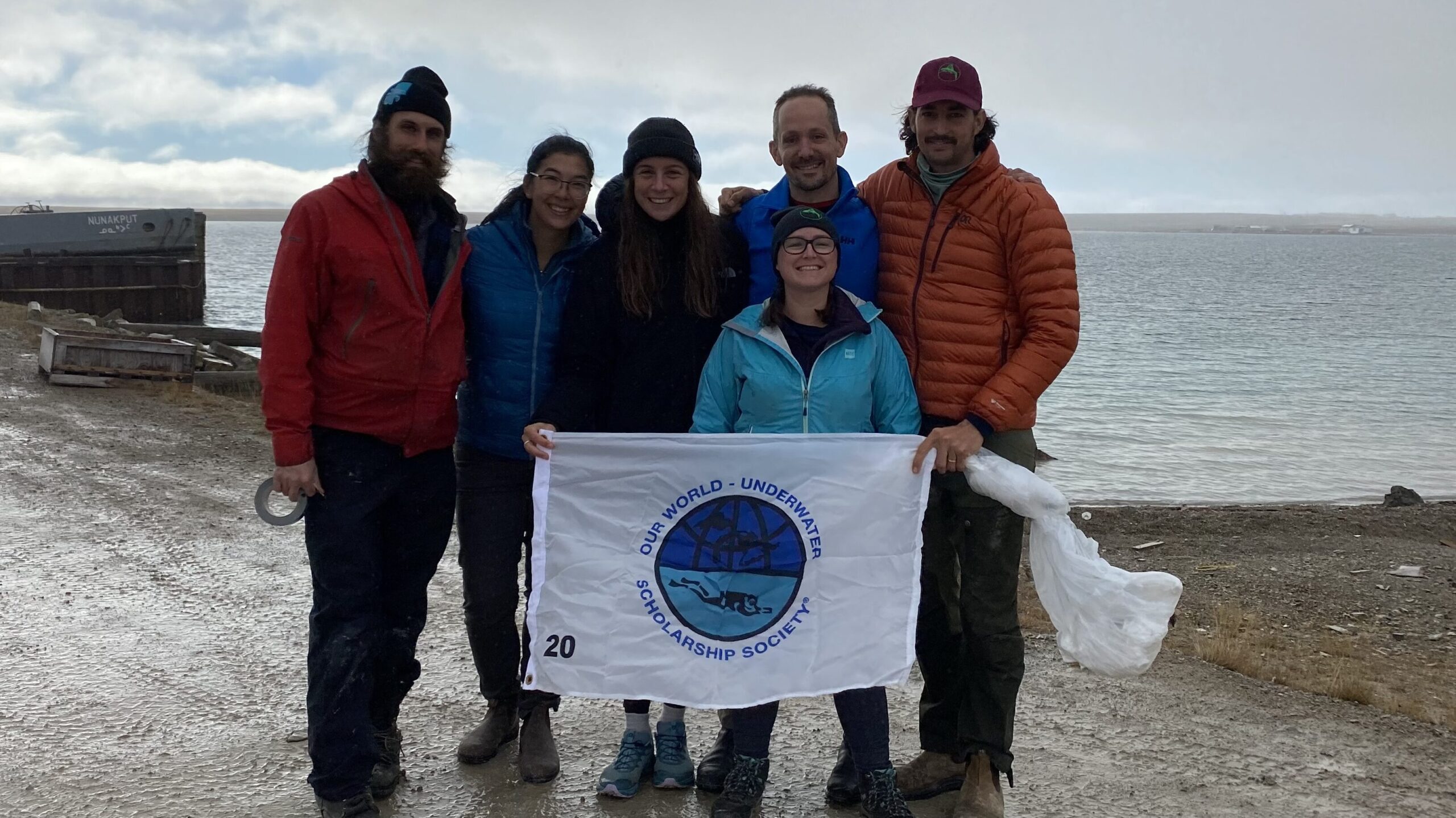
Flying the OWUSS flag with the amazing Ocean Networks Canada team at the site of the Cambridge Bay Observatory! Photo: Gerry Chidley
Thank you to Polar Knowledge Canada and the Canadian High Arctic Research Station for hosting me during my time in Cambridge Bay.
Thank you to the Ocean Networks Canada team, Ryan Flagg, Dirk Brussow, Ryan Key, Kiyomi Holman and Cassandra Bosma for warmly welcoming me! Thanks for sharing your knowledge and of course for the competitive card games and epic polar plunges.
Thank you to the crew from the Arctic Research Foundation for being such a joy to work with!
Lastly, thank you to all the beautiful people from Ikaluktutiak who shared their stories with me. I will be forever grateful for your honesty, hospitality and trust.
A huge thank you to the many people who continue to encourage and support me! Thanks to the Our World Underwater Scholarship Society and Rolex for making the scholarship possible. I would also like to thank my equipment sponsors Reef Photo and Video, Nauticam and Light and Motion as well as TUSA, Waterproof, Tabata Australia and Suunto.
Trip Tune: A little bit of love – Jon & Roy
Top Tip: Arctic fox run fast, so be sure to spot them quickly!
Join me, above and beneath the surface, on my adventures throughout the scholarship year. Subscribe to my blogs, follow along on Instagram, Facebook or flick me an email!
Next, I’m preparing to dive in the highest tides in the world…!!